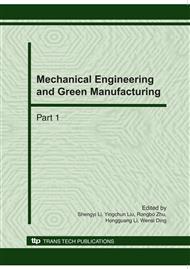p.696
p.701
p.707
p.712
p.717
p.722
p.727
p.732
p.737
Porous Media Modeling with Integrated Approach and Application in Water Flow Simulation
Abstract:
The porous media for liquid transporting and mechanical analysis, which are the hotspot studies in contaminant transport and machinery manufacturing, is hard to model in the computing simulation for the complexity of the media’s porosity. In the paper, an integrated approach is proposed to model the porous media with the framework of but not limited to sphere particles. Firstly, a series of particles are generated according to the grading curve in a closed box with the PFC3D, and then let the particles deposit freely for the gravity. After that the position and radium of each particle are exported to a file for import of AUTOCAD, where the particles are re-generated by the VBA script and the model for particles is constructed. The needed model is the porosity among the particles, so the model size is determined by a block and the model is gotten with the Boolean Operation which subtracts the particles from the block. And then with the different boundaries, the water transporting simulation in the porous media model is carried out with the Finite Volume Method (FVM). The results are proved reasonable by the previous studies.
Info:
Periodical:
Pages:
717-721
Citation:
Online since:
October 2010
Authors:
Price:
Сopyright:
© 2010 Trans Tech Publications Ltd. All Rights Reserved
Share:
Citation:


